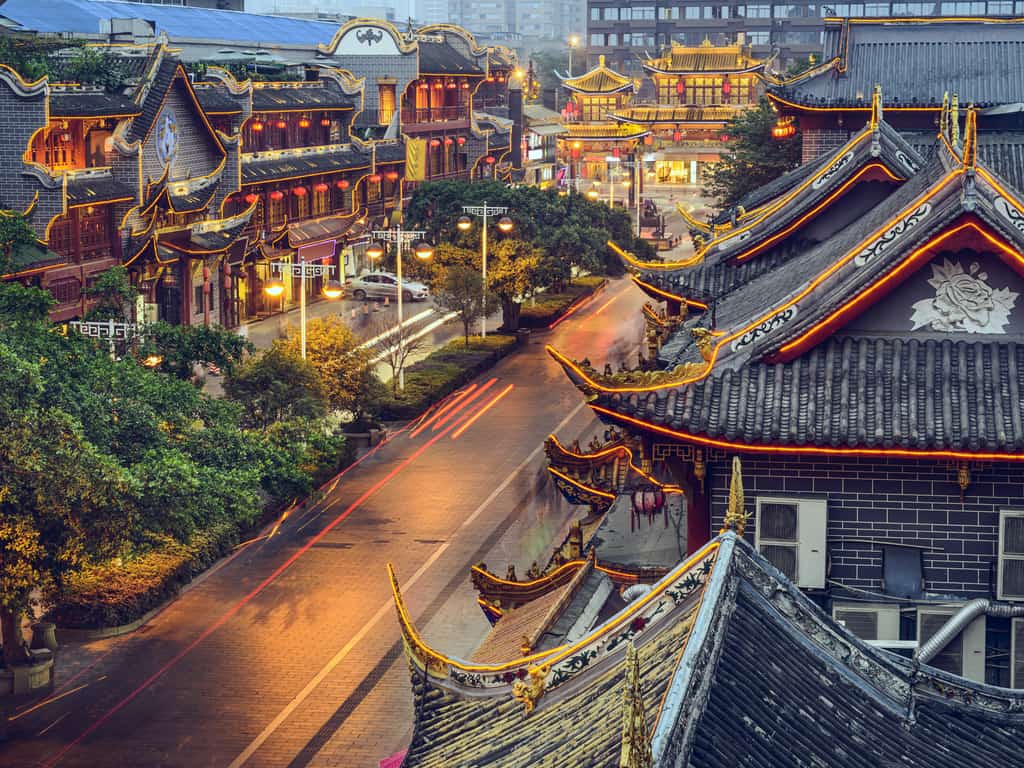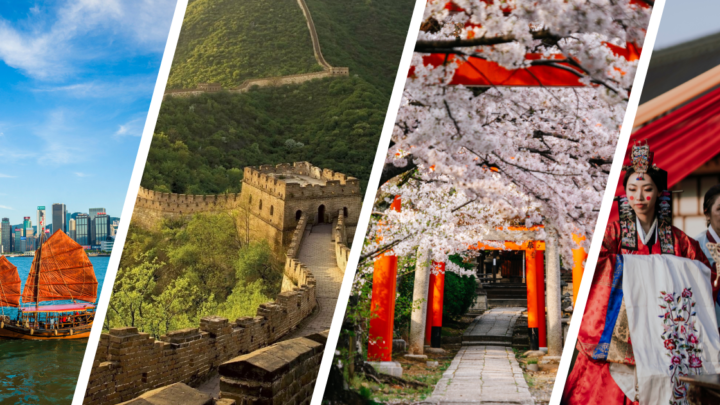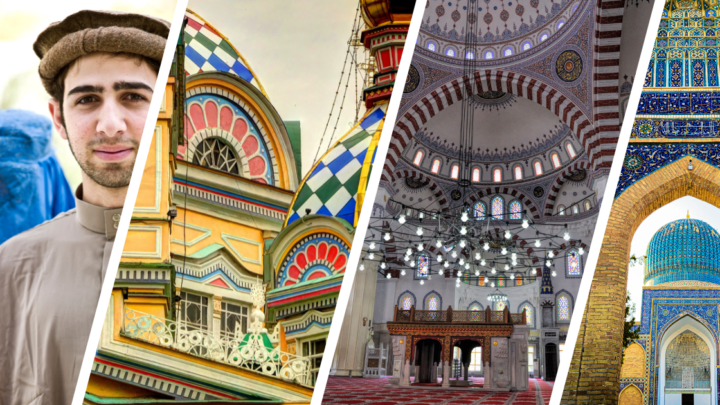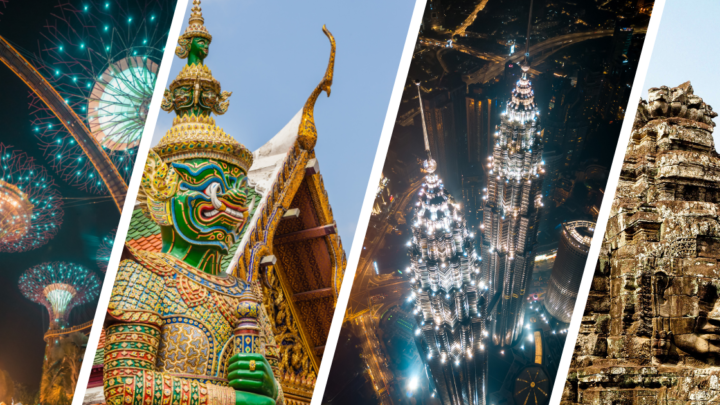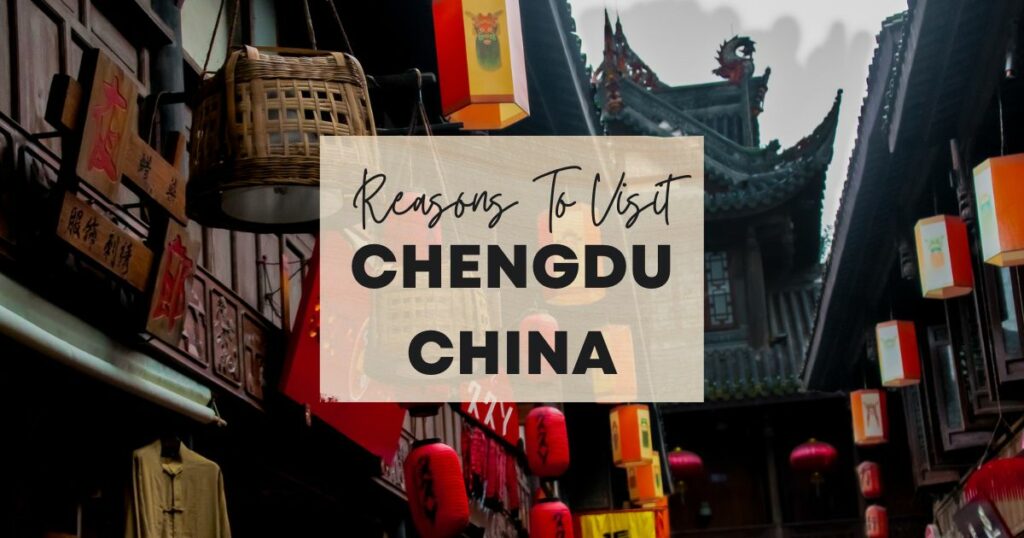Ready to pack your bags and head to Chengdu, China? For the best things to do in Chengdu, China, and the coolest places to visit in Chengdu, China. Scroll down for our top travel recommendations in Chengdu, China. Wondrous Drifter is an ambitious Web 3.0 travel startup with the potential to revolutionize the market.
Table Of Content
- Chengdu Giant Panda Breeding and Research Base
- Chengdu Happy Valley
- Chengdu Teddy Bear Museum
- Four Girls Mountain
- Jinli Old Street
- Jinsha Ruins
- Lizhuang Ancient Town
- Luodai Ancient Town
- Mount Qingcheng
- Museum of Sichuan Cuisine
- New Century Global Center
- People’s Park
- Qingyang Palace
- Sichuan Opera
- Taoping Qiang Village
- The Wide and Narrow Alleys
- Wangjiang Pavilion Park
- Wenshu Monastery
- Wuhou Temple
- Zigong Dinosaur Museum
- Explore Asia
Chengdu Giant Panda Breeding and Research Base
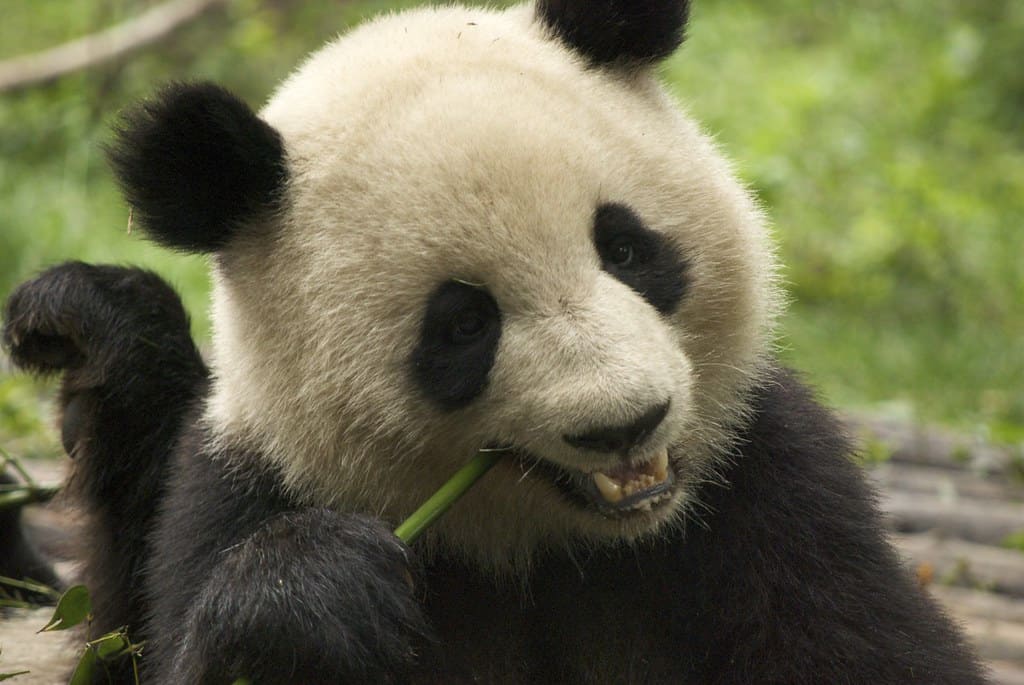
Research and breeding of young pandas are the main focus of this facility, called Chengdu Panda Base.
It’s among the most popular places to watch panda bears. This is a must-see when you visit Chengdu.
It’s not just about raising pandas at the Chengdu Panda Base; it’s also about educating the public about the importance of protecting pandas.
Additionally, you’ll find a variety of other lovely animals at the base, such as red pandas and peacocks.
Because it’s a research facility rather than a zoo, the emphasis isn’t on animal exhibits.
Giant panda bears prefer cold environments. Giant pandas like playing outside in the cooler months. When it’s hot out, pandas are more prone to stay indoors.
Travel during the hot summer months of June, July, or August and are unable to locate any pandas in the wild. You should visit the huge panda cages and delivery homes.
Address: 1375 Xiongmao Blvd, Chenghua District, Chengdu, Sichuan, China, 610016
Chengdu Happy Valley
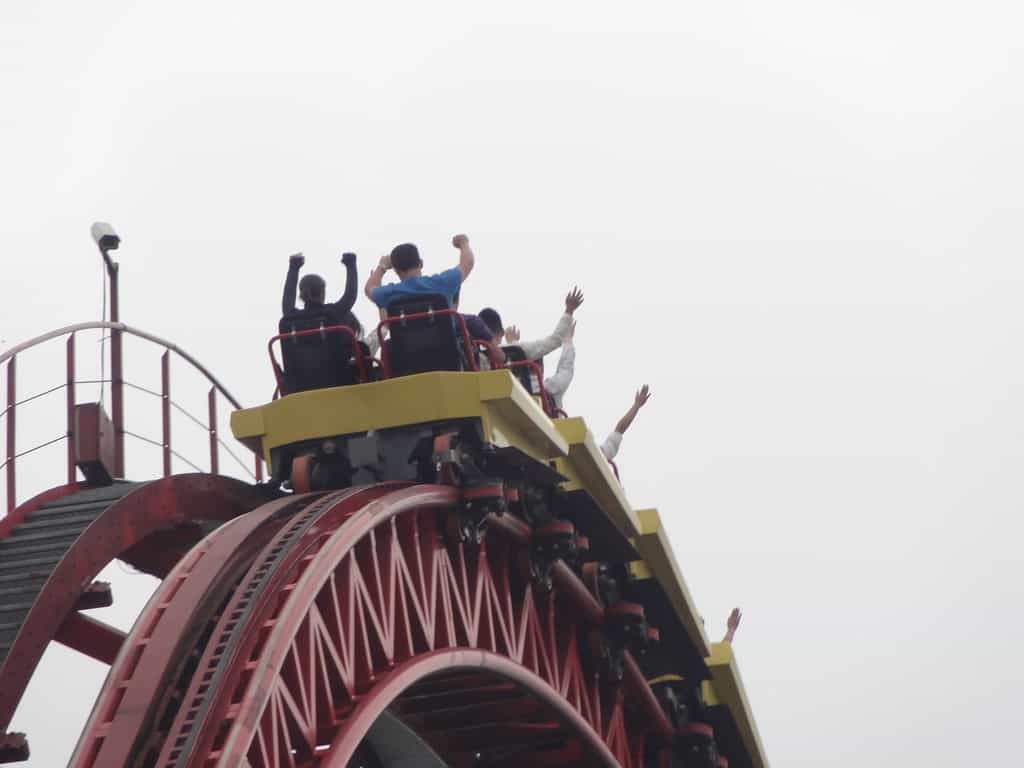
Chengdu Happy Valley is a massive, state-of-the-art theme park in the city of Chengdu, China, offering stunning views, intriguing attractions, and hours of fun.
It is situated on Xihua Avenue in the Jinniu District, about 7 kilometers (4 miles) northwest of Tianfu Square. It has a total area of 470,000 square meters.
Theme parks in Chengdu Happy Valley include the Great Szechwan, Magic Castle, Flying Island, Happy Light Year, Dream of the Mediterranean, and Sunny Harbor.
Great Szechwan is the only one that truly feels like home, as it has a distinct Chinese flavor. With its carnival-like atmosphere, the Happy Light Year welcomes visitors.
The Chengdu Happy Valley theme park also holds the International Pop Festival, the Extreme Sports International Championships, Holiday parties and events, and the International Magic Festival. Parent workshops and entertainment equipment specifically designed for family fun experiences are among the most recent additions to this theme park.
Address: 16 Xihua Blvd, Jinniu District, Chengdu, Sichuan, China, 610056
Chengdu Teddy Bear Museum

The Chengdu Teddy Bear Museum has accumulated an impressive collection of unique, limited-edition bears as the world’s largest Teddy Bear Museum. It’s a fantastic vacation spot for families with little children. Many displays and a 3D video about Teddy bears may teach visitors about the bear’s history and culture.
Artists from China and South Korea created the museum’s 12 display halls. Among the 12 halls is a Teddy history hall, a China hall, a globe hall, a sea hall, and a carving hall for Teddy.
The Teddy bears on display will take you back to some of history’s most memorable moments from the last century.
You will see a Teddy version of China’s 5,000-year-old history on display. There are scenes from Journey to the West, Romance of the Three Kingdoms, and other well-known Chinese mythology and historical stories shown in the area.
World-renowned designers have transformed the bears into beautiful works of art, which will be displayed during the exhibition. Visitors will be able to interact with cartoon characters that are popular with children.
Address: JQQW+4RM, Qishi Blvd, Wenjiang District, Chengdu, Sichuan, China, 611136
Four Girls Mountain

The mountain ranges’ summits offer various views, precisely like a beautiful young woman in an ornate gown. It’s a visual treat for the eyes!
Snow-covered summits are obscured and shown in equal measure in the clear blue sky. Ancient woods, turquoise lakes, roaring waterfalls, vibrant blooms, and stunning alpine meadows make this a photographer’s dream come true for nature enthusiasts.
Four Girls Mountain, so named because of its attractiveness, is a popular destination for mountain climbers and hikers.
Hikers frequently go from Changping Valley to Bipeng Valley, which is recognized for its diverse landscapes, including rare flora and animals, and is a popular destination. Rare flora and animals may be found at nearly every turn on the path because of the relatively high level of protection.
Some stretches of the trip are only passable by horses or on foot because of the terrain. As a result, travelers will unintentionally slow down and take in the scenery as they go.
Four Girls Mountain has recently become one of China’s most famous mountain climbing destinations and has been included in China’s Top 10 Renowned Mountains for Climbing. To meet the needs of visitors, additional routes have been developed.
Address: Ngawa Prefecture, Sichuan, China
Jinli Old Street
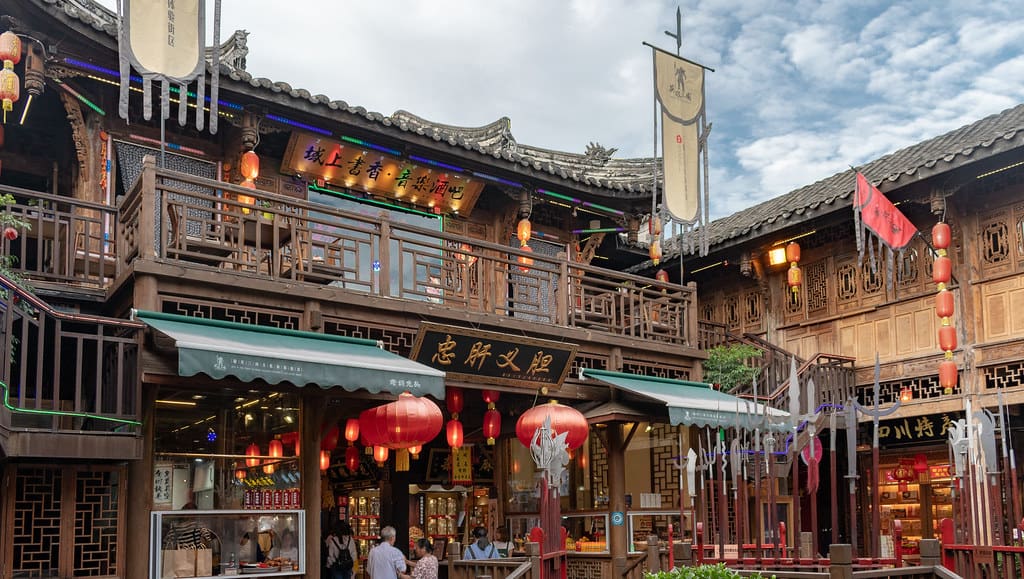
Expect to be completely enchanted by the glitz of Sichuan Province’s traditional customs.
The orderly arrangement of green tiles and the twisting bluestone pathways create the illusion that time has been reversed and they have returned to the past. Tea, food, wine, entertainment, and brocades with regional motifs arrive one after the other, creating a visual feast.
Along the tiny street, you will come across old-world shops offering Shu Embroidery, lacquer items, folk handicrafts, curios, and celebrity calligraphy and paintings.
Each of these establishments has its own distinct flair. Still, they all have one commonality: they are tranquil and pleasant, regardless of how crowded the area is.
You may browse at your leisure or purchase gifts for friends. Here, you’ll find the majority of unique regional items.
Community-based events are organized at specific times of the year to commemorate local traditions.
Celebrations include a lantern market during the Lantern Festival, a food festival, the Zongzi Eating Contest during the Dragon Boat Festival, Mid-Autumn Day activities, and so on.
Jinsha Ruins
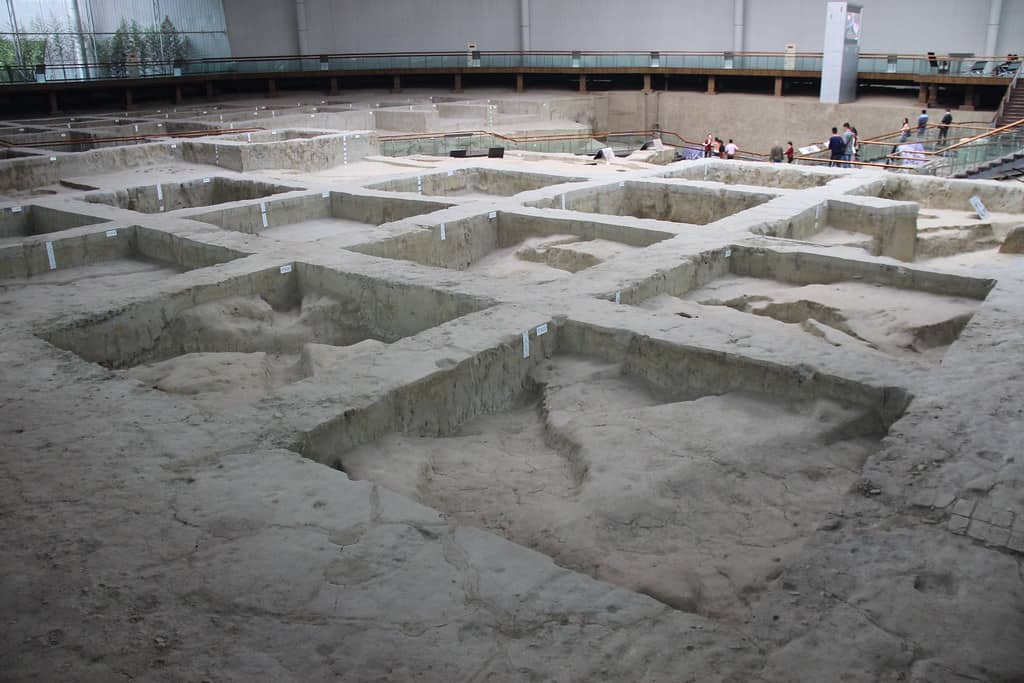
The Jinsha Museum of Ancient Ruins, located northwest of Chengdu, is a museum dedicated to the Shu culture of Sichuan during the Shang and Zhou periods.
Within the Qingyang District, the Jinsha archaeological site and its associated Jinsha Site Museum complex are located around seven kilometers (four miles) west of Chengdu’s central business district. In this way, it is a convenient location to visit.
The museum began planning and construction in late 2004 and was inaugurated on April 16, 2007. It includes a relic hall, an exhibition hall, a visitors center, cultural relic preservation, a restoration facility, a garden, and more. It is a contemporary garden museum with teaching, research, and pleasure.
And its past is reflected in its landmarks. The Jinsha ruins were recognized as a nationally significant cultural relics conservation unit in 2006.
Many of the hundreds of gold, copper, jade, and stone artifacts may be seen in the museum’s main building.
Address: Jisha Site Museum, 2 Jinsha Yizhi Road.
Lizhuang Ancient Town
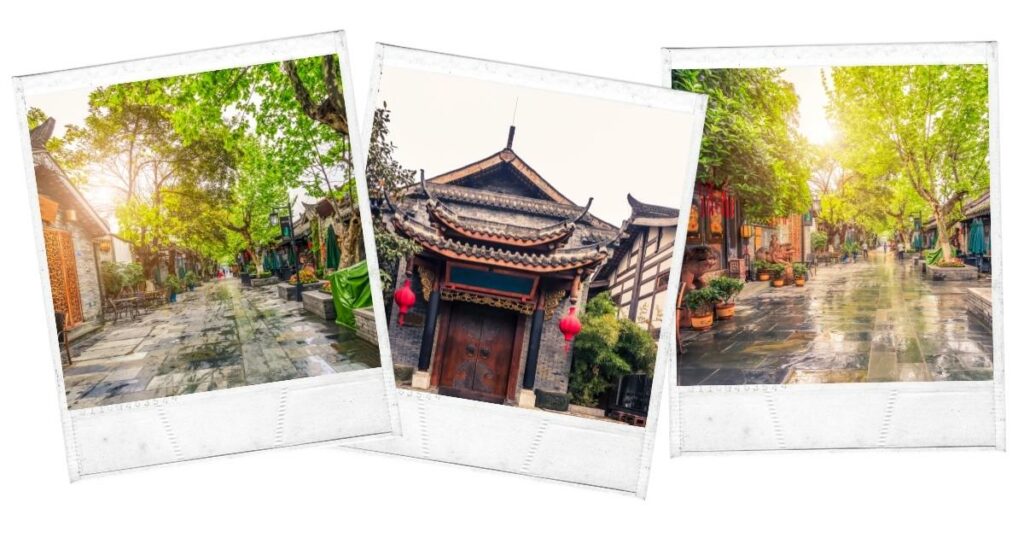
One of the few well-preserved ancient towns in China, Lizhuang shares the same fame with Zhouzhuang, which is another well-known ancient town in China.
State-level ancient old town Lizhuang Town is located in China. Lizhuang Ba, in Sichuan Province, approximately 19 kilometers from Yibin city. Lizhuang was a fishing village during the Han dynasty, and a post was established in the settlement.
The city was a major trading hub during the Ming and Qing dynasties. It is also known as “the first town in the Yangtze Area” due to its location near the mouth of the Yangtze River.
When China was at war with Japan, Lizhuang became home to several world-renowned research institutes and universities that flourished during the period of the Great Cultural Revolution (1937-45).
Tongji University, the Central Research Institute, and the Central Museum are among these institutions. As a result, the town attracted notable professors such as Sicheng Liang and his wife Huiyin Lin—both of whom are experts in architectural design.
Stone steps with unique characteristics connect the dock to the main street. The stairs wind around and around. These vibrant carvings and sculptures on the old buildings are beautiful and have a lot of artistic value.
Address: Cuiping, Yibin, Sichuan, China.
Luodai Ancient Town
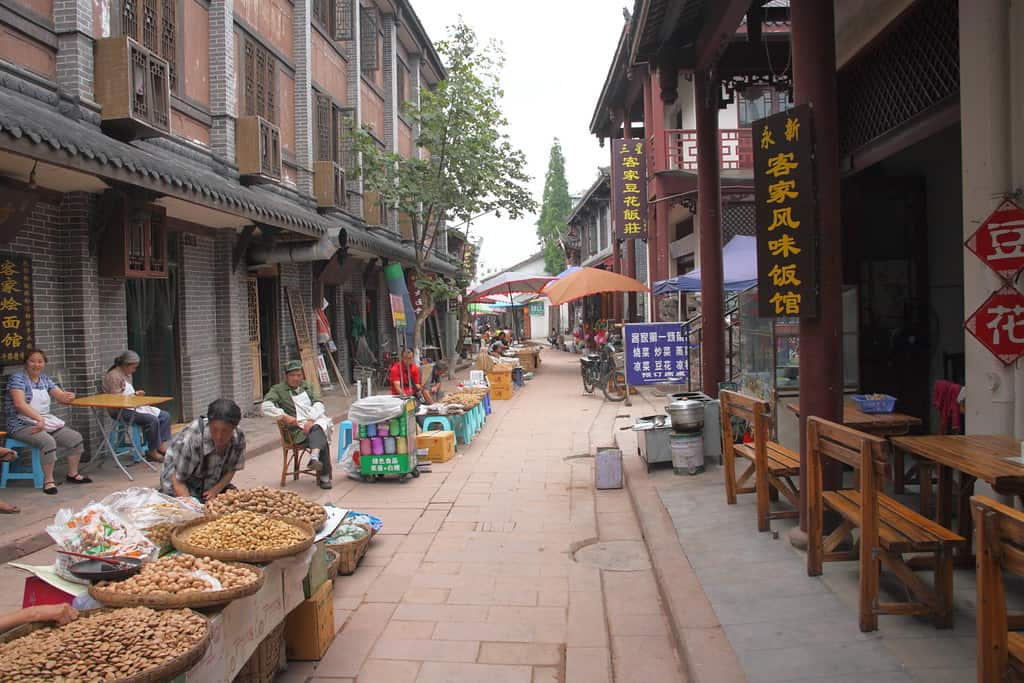
An intriguing novel with an ancient feel awaits you entering Luodai Ancient Town.
In terms of “two lakes and one mountain,” Luodai Ancient Town is the centerpiece. Since it has so much to offer tourists, Luodai is regarded as a National 4A Scenic Spot, Provincial Historic, Chengdu Key Protection Town, and Cultural Town. It is referred to as “World’s Luodai and Eternal Hakka” and “The Hakka Town in West China” because of its abundance of Hakka.
Cobblestones, historic houses, traditional snacks, and street cuisine line the endless expanse of cobbled roads. Guild Halls from Guangdong, Jiangxi, Hunan, and Northern Sichuan provinces are all Luodai.
The Hakka people of Luodai Ancient Town, a distinct branch of the Han people with a distinct history, are well-known in the area because of the great number of Hakka people living there. From the Ming and Qing eras, the architecture and design of the town have been preserved.
Snacks in Luodai Ancient Town resemble swan eggs since they’re composed of flour. Crisp on the exterior and soft on the inside, this sandwich will have you coming back for more after just one taste.
Address: No.132 Fuxing Street, Luodai Town, Longquanyi District, Chengdu, Sichuan
Mount Qingcheng
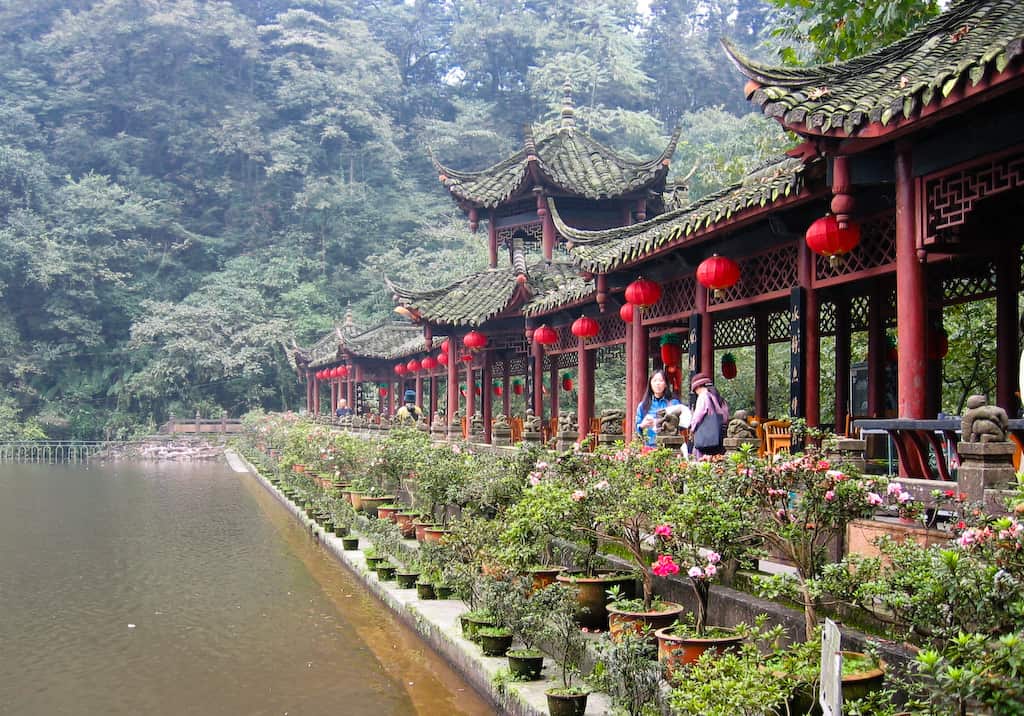
Mount Qingcheng is regarded as one of China’s most important gateways of Taoism.
On Front Mountain, you’ll find a wealth of historical and cultural treasures. In contrast, on Back Mountain, you’ll find a serene setting, clean air, and a peaceful haven.
The Mountain was included in the World Heritage List by UNESCO in 2000 and appeared in the 2011 and 2016 Kung Fu Panda films.
Overlooking the Chengdu Plain, the Mount Qingcheng range and the Min River form a picturesque landscape spanning 200 square kilometers.
The Laoxiao Ding, at 1,260 meters above sea level, is the highest point in the mountain range, which comprises 36 peaks. The summits form a circle, like an ancient city wall. Mountains in China are known as Qingcheng Shan (literally, “green city wall mountains”) due to their lush vegetation and year-round greenery.
Do you wish to see the “Panda Village” on Mount Qingcheng, which inspired the Kung Fu Panda animated feature film? Make sure to visit it!
Address: Qingcheng Mountain Town, Chengdu 611844, China
Museum of Sichuan Cuisine
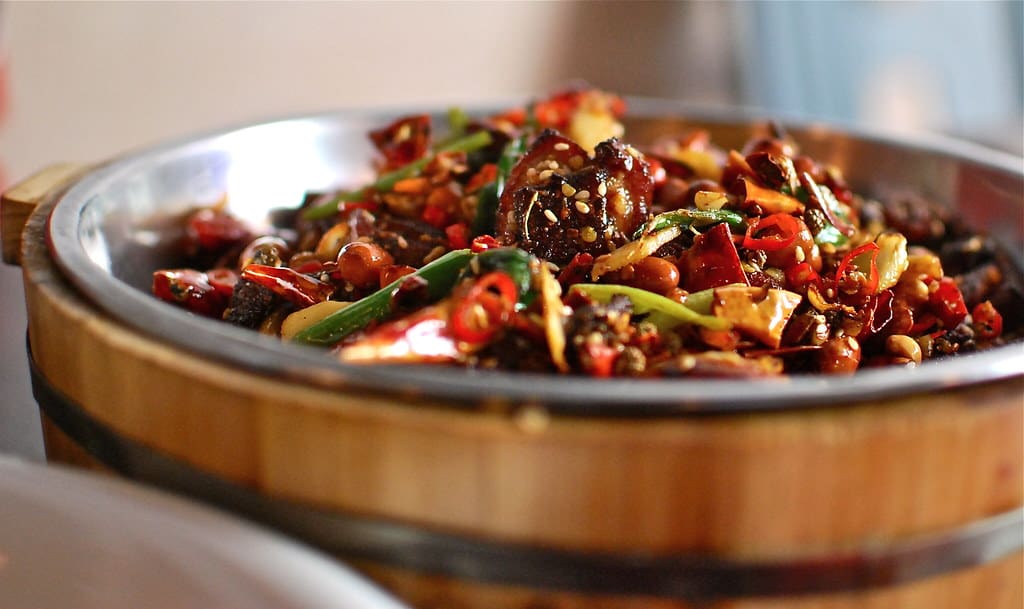
UNESCO has named Chengdu the City of Gastronomy.
The Sichuan Cuisine Museum in Chengdu, China, is the first museum to exhibit and teach an indigenous cooking culture. You may not only see, smell, taste, and also prepare the famed Sichuan cuisine.
The Sichuan Cuisine Museum (Chuancais Museum) is a AAA national museum dedicated to Sichuan cuisine, wine, opera, tea, architecture, and gardens.
Views of modern style classic garden landscape, western Sichuan style folk dwellings, and over 6000 antique and cultural artifacts relating to Sichuan food culture are available.
The Sichuan Cuisine Museum is still the only “EATABLE MUSEUM” that allows visitors to taste Sichuan cuisine. Visiting this museum will enable you to learn about Sichuan food culture and experience it with your tongue and nose.
From the moment you enter the museum, you are immersed in important activities. The highlight of your vacation should be making traditional Sichuan cuisine with a professional chef. There is no better way to learn about cuisine than to cook it yourself.
By cooking on your own, you will learn about chopping techniques, fire management, dish preparation, and of course, the infusions of Sichuan cuisine. Then explore the Sichuan Cuisine Museum, satiate your interest and taste buds, and enjoy “Playing with Chuancais.”
Address: No.8 Ronghua North Street, Gucheng Town, Pidu District, Chengdu, Sichuan
The world is your oyster. You should travel and see the world since it is so beautiful. Experience different cultures around the world by checking out the travel the world guide. When you roam around the world, you have to go to the USA. The United States is home to an abundance of breathtakingly gorgeous open landscapes. It also features a wide range of climates and topographic conditions. You have to check out the top states in USA to visit.
New Century Global Center

Chengdu, a city in central China, is home to the world’s largest mall.
It became a new regional tourism destination when it debuted in September of last year. A large number of tourists are interested in experiencing what it is like to live and work in one of the world’s largest and most imposing structures.
It is intended to function as a self-contained town, with its own hotels totaling 2,000 rooms. There is a more than kilometer-long indoor beach area.
This is not the city’s only mall that has recently been constructed or is now under development. Chengdu has seen a surge in mall buildings.
Chengdu companies have just completed the construction of 2.9 million square meters of mall space. Thus the new mall accounts for less than half of the entire new mall area.
Chengdu is constructing more new mall space than 89 Western European towns combined. As per the CBRE research organization, the Chinese will build half of the world’s new mall space in 2013. In 2014, China’s malls may have a 30% vacancy rate.
It is enormous! It is double the size of the previous Dubai mall record holder and Guangdong’s largest mall, the New South China Mall.
Address: 1700 Tianfu Ave North Section, Wuhou Qu, Chengdu Shi, Sichuan Sheng, China
People’s Park
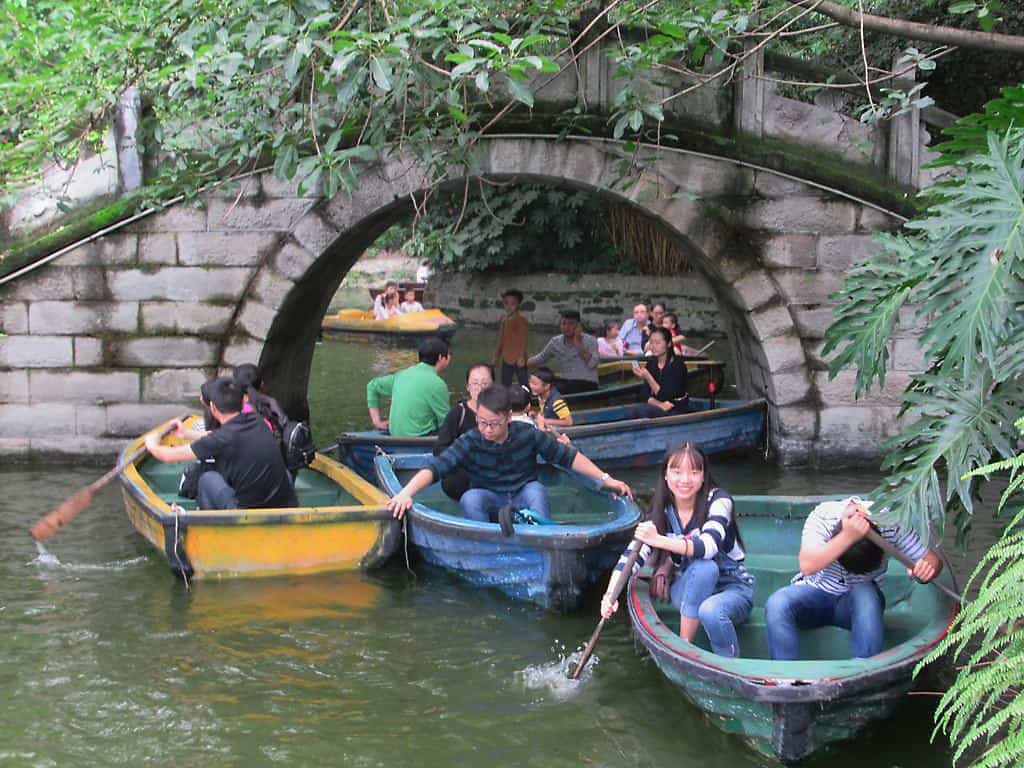
The city’s first public park, Renmin Park is, also known as the People’s Park, is located in the heart of Chengdu.
Artistic landscaping, a bonsai garden, teahouses for the elderly, and a pond complete with rowing and motorboats that link twisting streams make this a wonderful city park. There are many residents there, and it’s a great location to spend a day sipping tea and soaking in the atmosphere of Chengdu.
People’s Park in Chengdu has a long history and attracts a large number of visitors. One of People’s Park’s most appealing features is that it’s a place where you’ll see a diverse range of people and activities.
The park’s features include a large lake on the park’s south side. Rent a boat and explore the park’s aquatic side.
More water calligraphy, dancing, and kite flying take place on a big rock sculpture near the entryway. It’s important to remember, however, that many elderly kite fliers like flying the kites so far distant that no one could ever see them kite.
People’s park, of course, has the famed Heming teahouse. If you sit in the teahouse, expect to be provided an ear cleaning in the traditional method. People playing pipa and erhu, two traditional Chinese instruments, can be heard occasionally in the neighborhood.
Address: No.12 Shaocheng Road, Citang Street, Qingyang District, Chengdu, Sichuan
Qingyang Palace
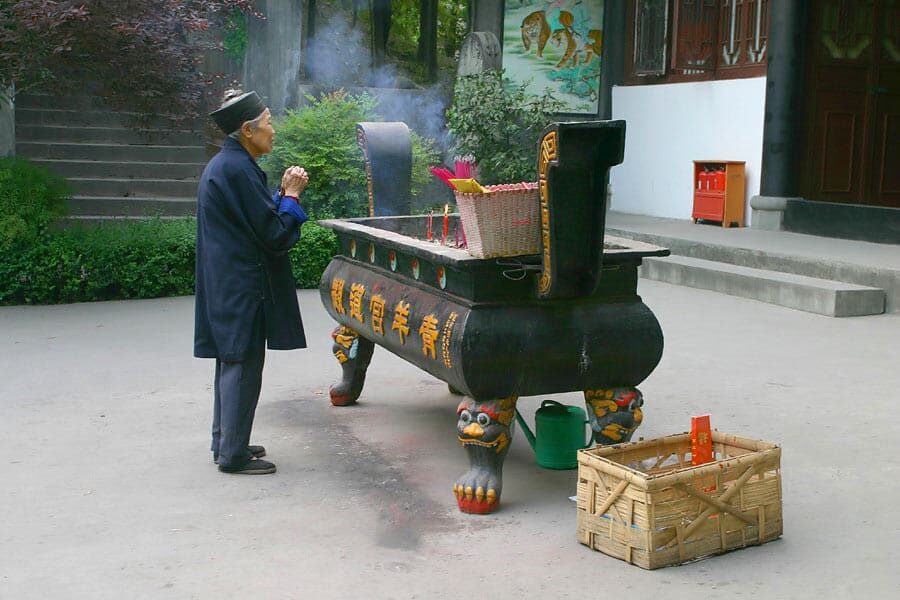
This palace sits three kilometers outside of Chengdu in the city’s far southwest outskirts. Qingyang Palace For more than a millennium, the Tang Dynasty palace was damaged and demolished, and the Qing Dynasty palace was built to replace it.
A stunning structure on the Qingyang Palace grounds, Sanqing Hall possesses an imperial air of grandeur.
There are approximately 1,600 square kilometers of wood and brick construction that was established during the Tang Dynasty and renovated during the Qing Dynasty during Tongzhi’s 8th year of regency.
Two lions play silk balls on the building’s walls, windows, and pillars, adding even more color and detail to the already stunning architecture of the structure.
There are many Taoist palaces in China, but Qingyang Palace is the biggest and oldest in Chengdu. It is also one of the most well-known Taoist palaces in China.
There are six main structures in one axis at Qingyang Palace: the Front Gate, the Hunyuan Hall, the Hall of 3 Purities, and Goddess Doumu’s Hall. They go from the south to the north. In the Halls, you can see a traditional Chinese Taoist style with glazed tiles on the roof, animal-carved pillars, and many symbols and the eternal duality of Ying and Yang.
Be sure to visit the spectacular Qingyang Palace!
Address: No.9 West Section of the First Ring road, Qingyang District, Chengdu, Sichuan
Sichuan Opera
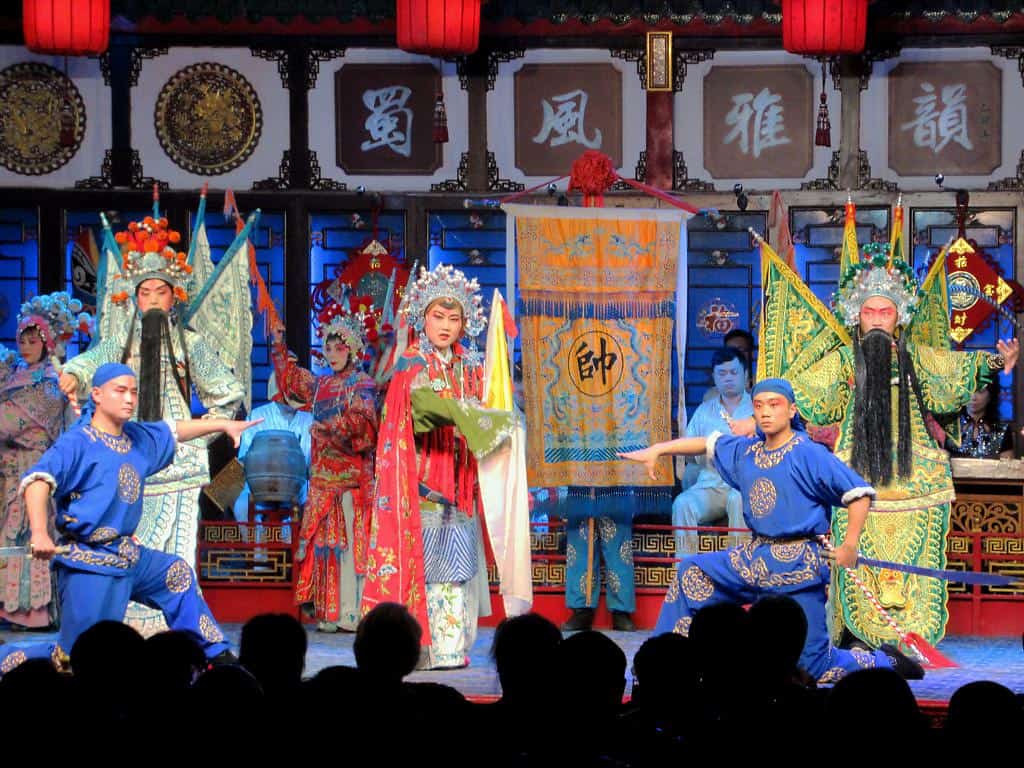
Although Chengdu boasts many museums, historical landmarks, and ancient temples, the city’s opera, which is part of China’s longest regional opera heritage, really sets it apart from the rest of the country.
In contrast to Western opera, which typically features a single monologue or dialogue from beginning to end, Chinese opera (with the exception of Beijing Opera) is composed of a variety of acts, some of which include circus-like stunts (acrobatis, fire blowing, clowning, etc.) and others of which are purely dramatic and narrative in nature.
It is also characterized by its circus-like elements, where actors are either acrobatic, magicians, fire-spitting, or clown-like performers, as well as another category of performers in which Chengdu is absolutely exceptional: face-changing. This uses numerous (layered) masks which can be changed at lightning speed, and it’s an art form that the city of Chengdu excels at.
The Shu Feng Ya Yun Sichuan Opera House is a wonderful place to see a show.
Traditional costumes, music, mask-changing, fire-breathing, and a dynamic puppetry act are all on display at this Sichuan opera house.
Address: 132 Qintai Lu, Qingyang District, Chengdu
Taoping Qiang Village
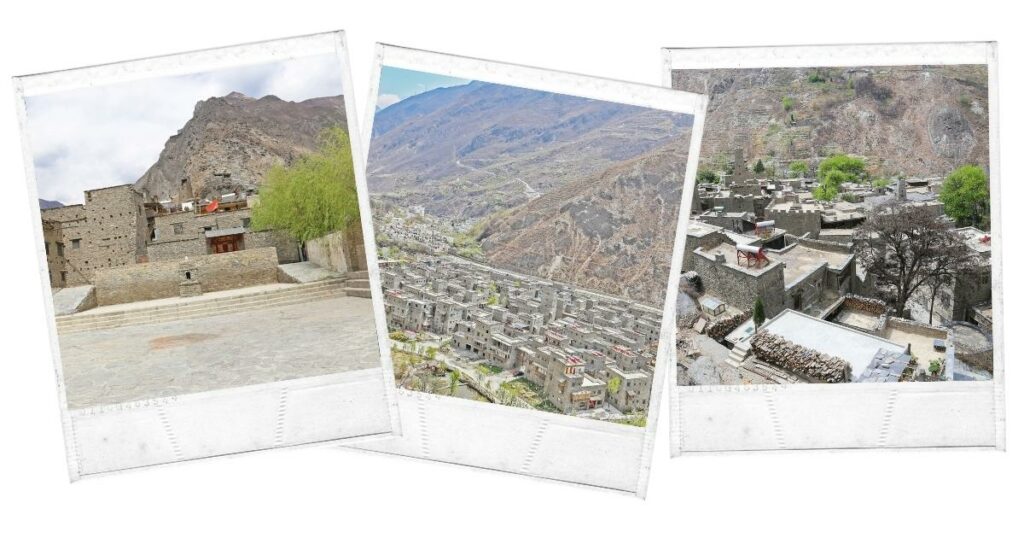
Taoping Qiang Hamlet, around 180 kilometers from Chengdu, is the greatest destination in China to see real watchtowers, a largely untouched Qiang village, Qiang needlework, Qiang music, and Qiang dance.
Among Qiang people, Taoping Qiang Village features the best-preserved Qiang architecture, as well as the most primitive Qiang culture. Experts refer to the village as the “strange oriental castle” since it is the greatest example of Qiang-style building groupings.
Taoping Qiang Village has a large number of households that rent out rooms to visitors. Zhou Lizhi’s household is the first to welcome visitors to their home.
This low-cost house is an excellent choice for a relaxing getaway, thanks to its historic exterior and the clean, cozy interiors that are decorated in a contemporary style. In addition, you have the option of choosing to lodge in Li County.
Taoping Qiang Village is most known for its Qiang-style songs and dances, which are the primary attractions. For far over a millennium, the Qiang folks have indeed been renowned for their musical prowess.
They sing whenever and wherever they can, even in the fields. If you don’t see the singing and dancing performances, you’ll regret it.
The Wide and Narrow Alleys
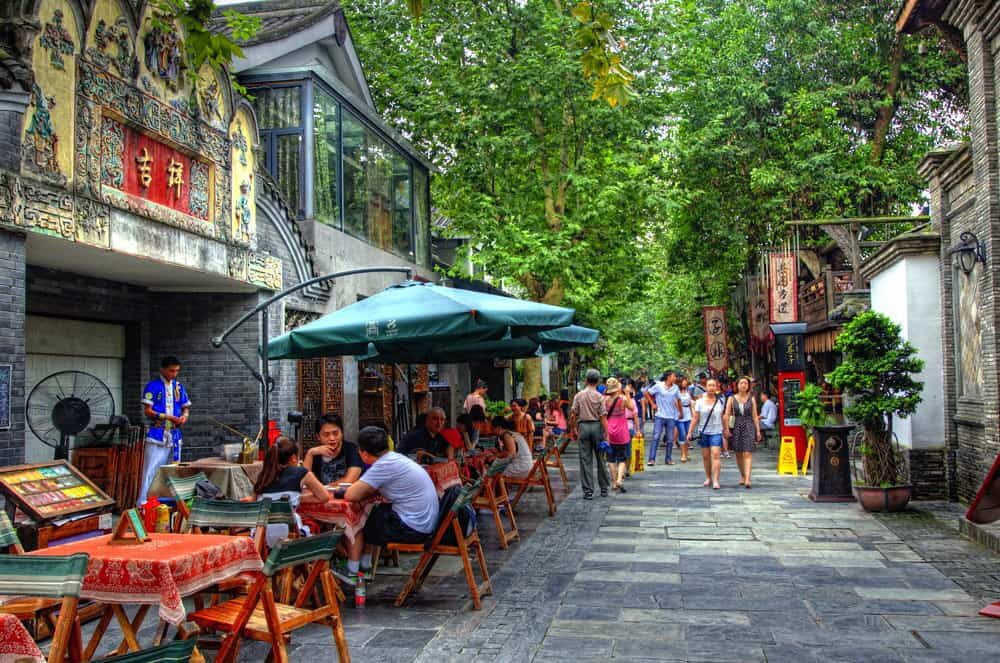
For those who are curious about Chengdu’s way of life and folklore, this alley is an excellent place to start.
Among the many interesting features are the locals, historic inns, and teahouses from the city’s long history. There is an Experiencing House of Old Chengdu Life inside the alley, serving as the alley’s cover and tourism center.
It has a kitchen, a study, a living room, and a bedroom. It focuses on the daily lives of a typical family during the Republic of China (1912–1949 AD). Visitor attractions include shadow plays, puppet shows, and Sichuan embroidery.
In addition to Daci Monastery and Wenshu Monastery, Chengdu’s alleyways are one of the city’s most popular tourist attractions.
A trip to Chengdu’s back lanes offers tourists a taste of the city’s laid-back and pleasant lifestyle, including boutique hotels, unique local snacks and food, traditional teahouses, interesting inns, and soothing spa retreats.
Wangjiang Pavilion Park
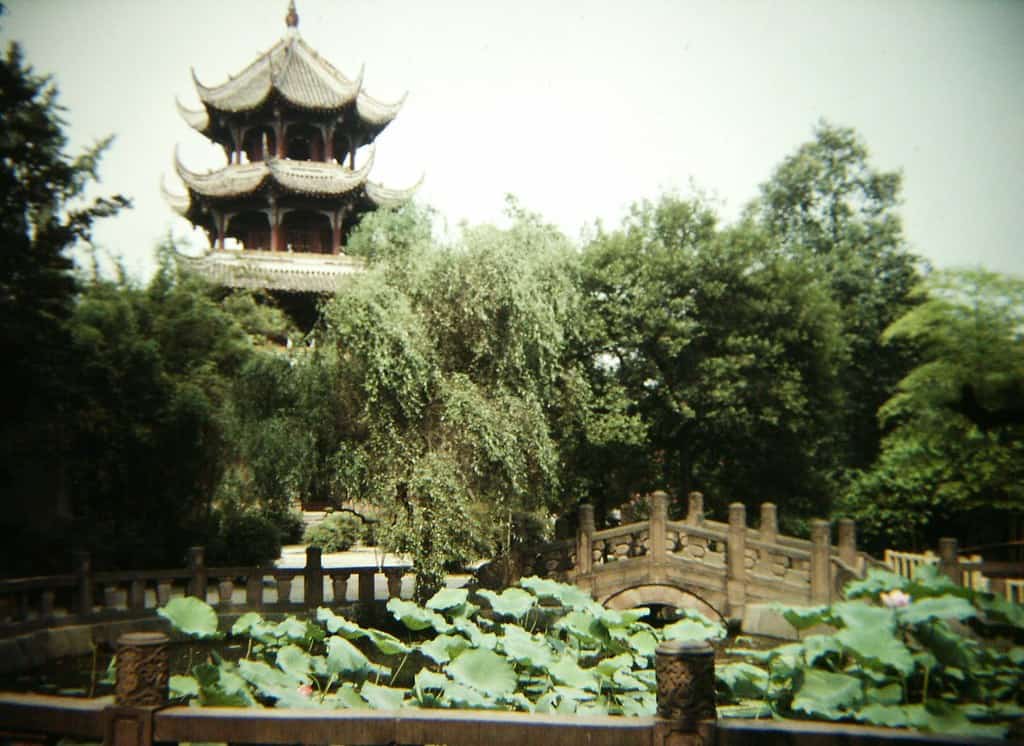
Out of the Eastern Gate, Wangjiang Pavilion Park is nestled in a bamboo grove beside the Jiangjiang River. Most of its 177 acres are covered with bamboo.
It was constructed during the Ming and Qing dynasties to honor Tang dynasty poet Xuetao. As soon as you walk through the gate, a lush bamboo forest greets your gaze. One may find almost 150 varieties, many of which originate from China, Japan, and Southeast Asia in this grove.
There are teahouses, a fishing area, and an amusement park along the river. Teahouses are a popular pastime for residents of Chengdu. These teahouses have a lengthy history and an impressive quantity, and each has their own distinct design aesthetic.
As soon as you walk into a teahouse in Chengdu, you’ll be able to detect the city’s distinctive aroma. A small square table, a tea set covered in cloth, a massive cooking range, and a red copper pot can be seen.
Address: NO. 30 Wangjiang Road
Wenshu Monastery
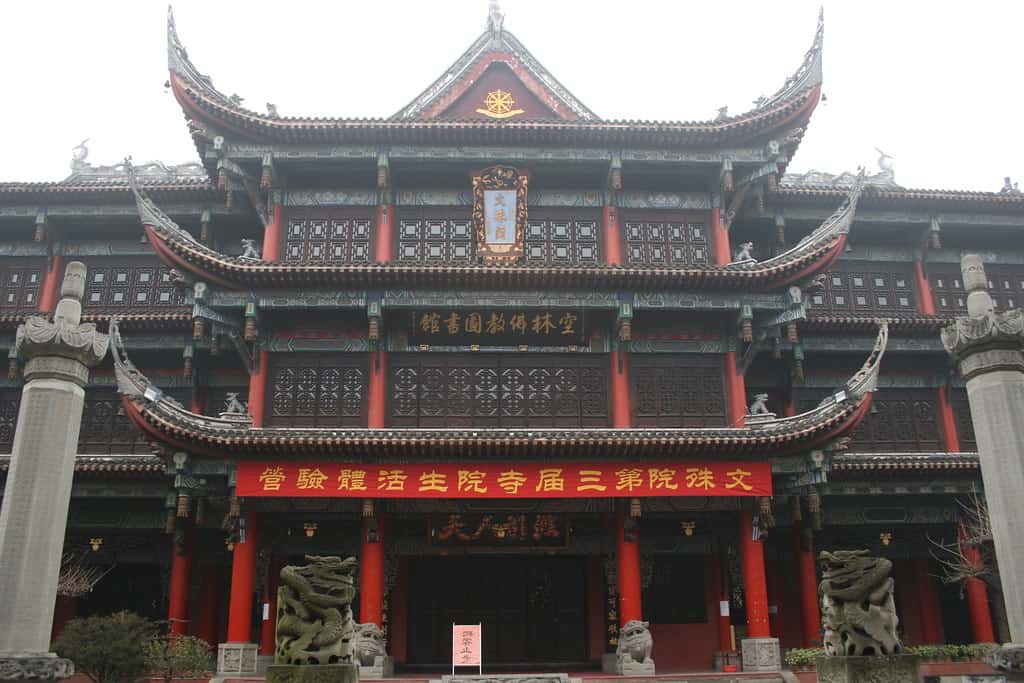
Numerous locals are praying and burning incense at this real Buddhist temple.
In addition, Wenshu Monastery has a beautiful garden in the temple, where locals regularly wander. The most fascinating aspect is watching old men bringing their birdcages so that the birds get some fresh air.
Wenshu Monastery is not a tourist attraction but a genuine shrine dedicated to Buddhism.
It is available to the public, and the temple provides free incense for individuals to use. In addition, travelers can participate in Buddhist activities while they’re in the country. For the Wenshu Monastery, it may be important to focus on giving rather than taking.
The vegetarian eatery next to the monastery’s teahouse is a must-stop for everybody who visits the monastery. The dishes are great, and the prices are reasonable.
Although the multilingual menu uses the words “pork” and “beef,” don’t be alarmed; they’re only faking meat here. If a food on the menu claims to be hot, don’t be afraid to try it.
They aren’t spicy when compared to hotpot, but they are mild in comparison. Another restaurant level offers a la carte service for those who like to customize their meals.
Everything at Wenshu Monastery, from the serene and spiritual ambiance to the village life and the essence of Buddhism, will be at your disposal once you arrive.
Address: No.66, Wenshuyuan Street, Qingyang District, Chengdu, China
Wuhou Temple
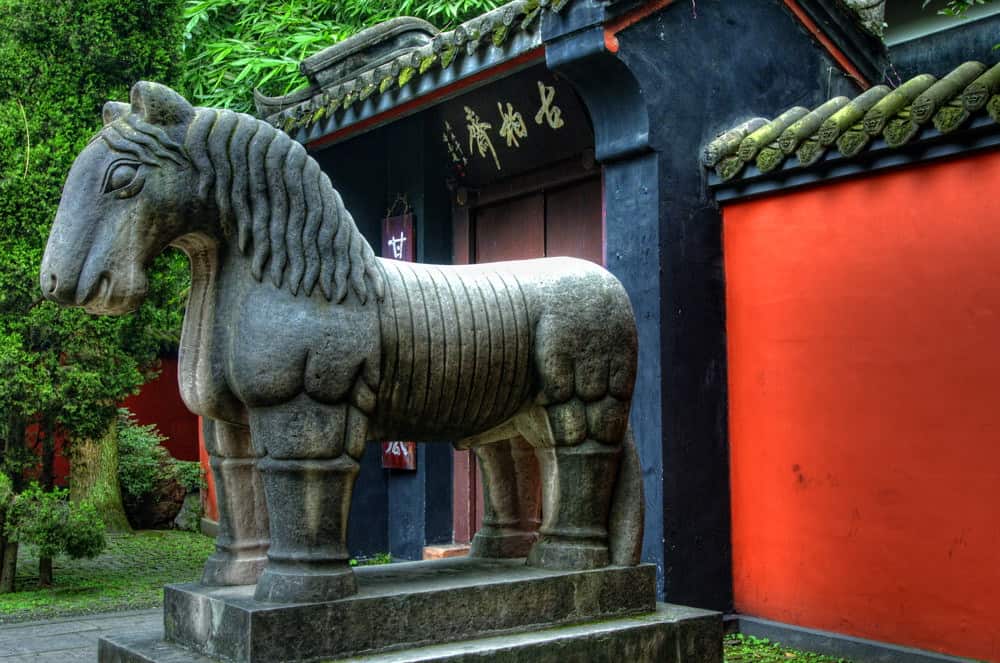
Zhuge Liang, the Marquis of Wu (Wuhou) of the Kingdom of Shu during the Three Kingdoms Period, is the benefactor of the Wuhou Temple, also referred to as the Wuhou Shrine Temple of Marquis (220 – 280).
A great politician, military leader, diplomat, and astrophysicist, Zhuge Liang had it all. The mausoleum and temple of Shuhan’s emperor, Liu Bei, are other well-known historical landmarks inside this vast picturesque area.
Chengdu’s Wuhou Temple may be found in the city’s southwest section. Its origins remain a mystery. There is only one thing we know about it: it was constructed right close to the Temple of Liu Bei.
The memorial is rather vast, making it a pleasant area to stroll through. Trails and woodlands occupy 37,000 square meters. In addition to the temple complex’s architectural and historical appeal, the park features mature cypress trees.
The temple’s main structure is basic but dignified. Sections are arranged in descending order from south to north: the First and Second Gate, Liu Bei’s Hall, and the Corridor.
The Shu Emperor and his ministers are depicted in clay sculptures that adorn the inside. The Kingdom has 47 statues of Liu Bei, Zhuge Liang, and other officials.
It is possible to go south to north across much of Wuhou Temple’s main structure, which is divided into many sections by a series of entrances and exits known as the “Four Gates.” The Tomb of Liu Bei, located on the west side of Wuhou Temple, is well worth a look.
Address: 231 Wuhouci Street, Chengdu City, Sichuan Province
Zigong Dinosaur Museum
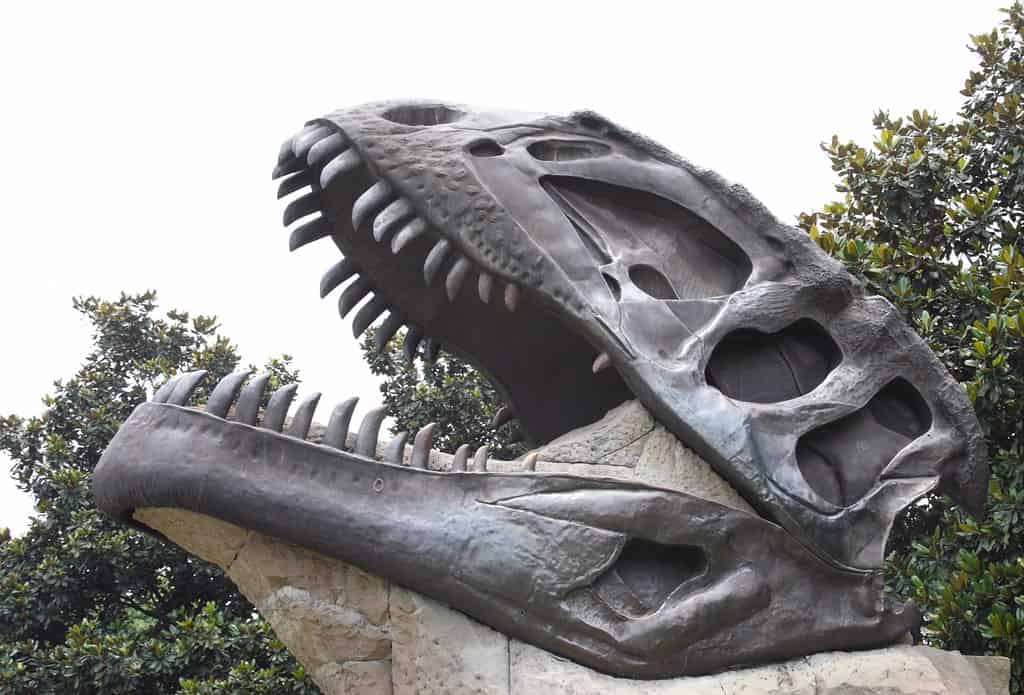
In addition to being one of the world’s largest dinosaur museums, the Zigong Dinosaur Museum in Zigong City, China, is the country’s first specialist dinosaur museum.
The Zigong Dinosaur Museum, which opened in 1987 and is 11 kilometers (7 miles) outside of Zigong City, is spread out across 25,000 square meters. At the Da Shanpu dinosaur fossils group site, the museum has the world’s greatest collection of dinosaur fossils from the mid-Jurassic period.
Since dinosaur bones were discovered in the area, Zigong has been known for its abundance of salt. There are over 40 dinosaur-remains-found-at-sites-near-city locations, each from a distinct era. The Da Shanpu site’s dinosaur fossils were discovered in 1972 for the first time.
More than 100 distinct dinosaur skeletons have been found at a site with a surface area of about 3,000 square meters. Meso-Jurassic era fossils have been discovered. Just 20% of the world’s most giant dinosaur fossils date back to the Jurassic Period, making these mid-Jurassic fossils very significant.
The location where the dinosaur fossils were discovered is included in the third display. Visitors may get a bird’s eye view of the dinosaur remains from a high vantage point. Tourists to the Zigong Dinosaur Museum may get up and personal with dinosaur fossils and learn about how they were formed.
The Chinese National Tourism Bureau called the Zigong Dinosaur Museum “One of the forty greatest and most renowned Chinese scenic travel places.”
Need more reasons to visit Chengdu, China? Hop over to why visit Chengdu, China, at least once in your lifetime here?
Address: Daan, Zigong, China, 643013

